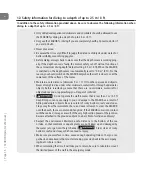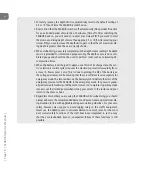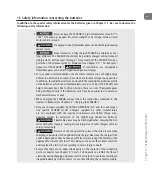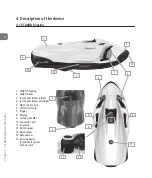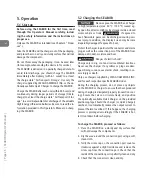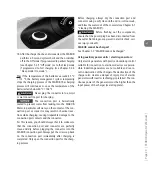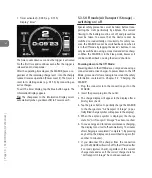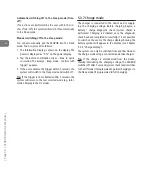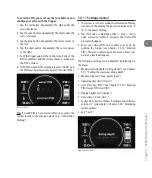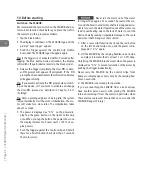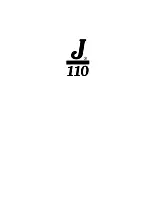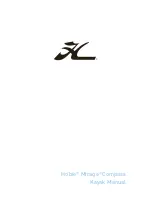
5
| P
age 29 | SEABOB Operator's Manual |
14. After the charger has been disconnected, the SEABOB
performs a 5-second system check and then switches
off to the Off mode if programmed to partial charging
(see Chapter 5.3.5 "Off mode") or to the Sleep mode
if programmed to full charging (see Chapter 5.3.6
"Sleep mode / On mode").
Tip:
If the temperature of the batteries exceeds 45 °C
/ 113 °F, the battery management system temporarily
stops the charging process of the SEABOB. The charging
process will continue as soon as the temperature of the
batteries falls below 40 °C / 104 °F.
Never plug the connector into a moist
or wet connection port for charging.
The connection port is hermetically
sealed to prevent water from leaking into the SEABOB.
Water, in particular salt water, on the contacts of the con-
nection port or connector may result in chemical reac-
tions while charging, causing irreparable damage to the
connection port contacts and the connector.
For this reason, you should always check to make sure
that the connection port and connector are perfectly
clean and dry before plugging the connector into the
SEABOB connection port. Always put the screw cap back
on the connection port immediately after charging is
completed. Only open the connection port for the charg-
ing process.
Before charging, always dry the connection port and
connector using a soft, clean cloth and / or cotton swab,
and blow the water out of the contacts (see Chapter 6.1
"Cleaning the SEABOB").
Before flushing out the components,
ensure that the power plug has been disconnected from
the outlet. Not doing so may result in electric shock, seri-
ous injury or death!
SEABOB cannot be charged:
See Chapter 7.7 "SEABOB cannot be charged".
Using auxiliary power units / electric generators:
Only electric generators with precise closed-loop control
suitable for connection to electronic devices are permis-
sible. Induction generators are not suitable and can re-
sult in destruction of the chargers. The destruction of the
charger also creates a danger of injury. Use of electric
generators with inverter technology is preferred. The con-
tinuous power of the generator must be higher than the
input power of the charger (see rating plate).


